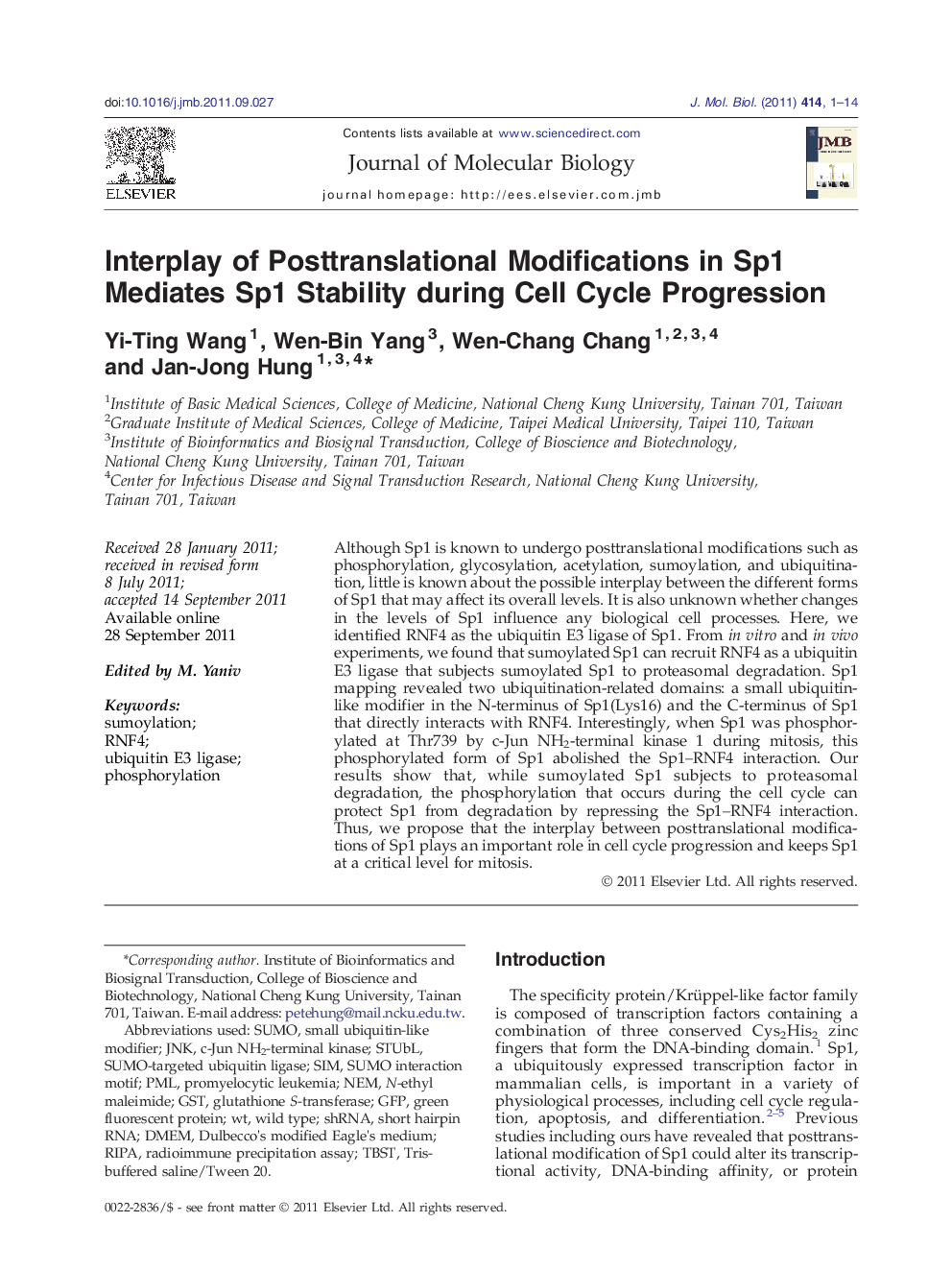| کد مقاله | کد نشریه | سال انتشار | مقاله انگلیسی | نسخه تمام متن |
|---|---|---|---|---|
| 2184716 | 1095922 | 2011 | 14 صفحه PDF | دانلود رایگان |

Although Sp1 is known to undergo posttranslational modifications such as phosphorylation, glycosylation, acetylation, sumoylation, and ubiquitination, little is known about the possible interplay between the different forms of Sp1 that may affect its overall levels. It is also unknown whether changes in the levels of Sp1 influence any biological cell processes. Here, we identified RNF4 as the ubiquitin E3 ligase of Sp1. From in vitro and in vivo experiments, we found that sumoylated Sp1 can recruit RNF4 as a ubiquitin E3 ligase that subjects sumoylated Sp1 to proteasomal degradation. Sp1 mapping revealed two ubiquitination-related domains: a small ubiquitin-like modifier in the N-terminus of Sp1(Lys16) and the C-terminus of Sp1 that directly interacts with RNF4. Interestingly, when Sp1 was phosphorylated at Thr739 by c-Jun NH2-terminal kinase 1 during mitosis, this phosphorylated form of Sp1 abolished the Sp1–RNF4 interaction. Our results show that, while sumoylated Sp1 subjects to proteasomal degradation, the phosphorylation that occurs during the cell cycle can protect Sp1 from degradation by repressing the Sp1–RNF4 interaction. Thus, we propose that the interplay between posttranslational modifications of Sp1 plays an important role in cell cycle progression and keeps Sp1 at a critical level for mitosis.
Journal: Journal of Molecular Biology - Volume 414, Issue 1, 18 November 2011, Pages 1–14